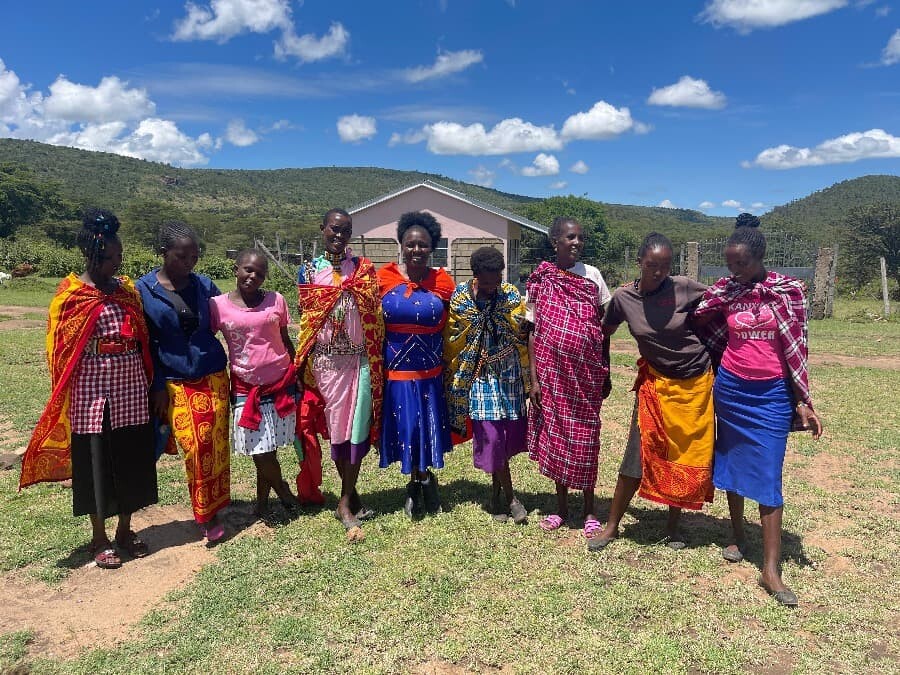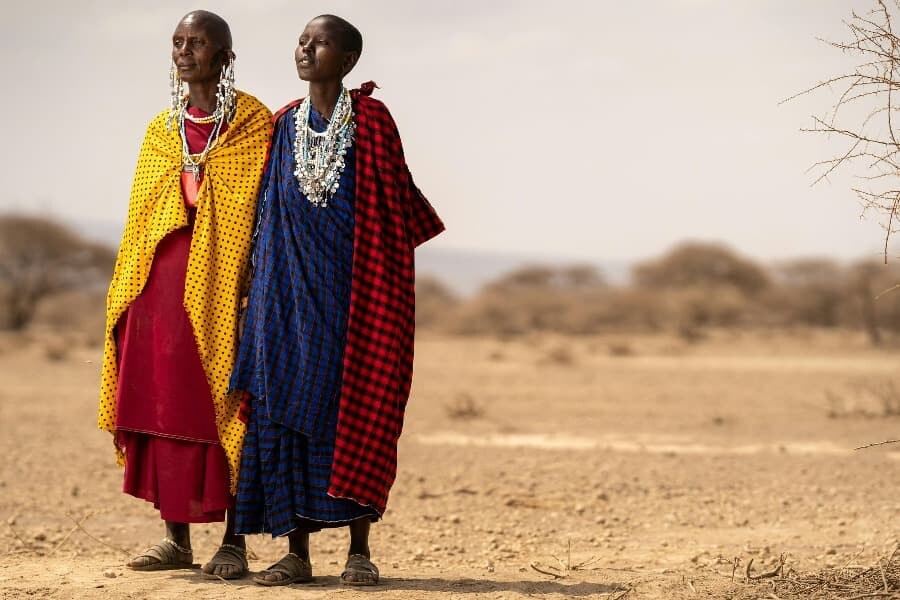Did you know that there’s an ethnic group called the Maasai in Kenya and Tanzania?
At Cooperating Volunteers, we collaborate on a project with Maasai women in Kenya. Our roles range from creating a database to building a roadside stall for selling the items they make, teaching basic English or mathematics, completing a local church with concrete, or constructing a suitable building, among others.
Today we’ll tell you more about their culture and the region they live in, Maasai Mara.

This ethnic group isn’t only found in Kenya but also in Tanzania. They are known for their pastoral and nomadic lifestyle, their social system based on clans, their hunting skills, colorful attire, and traditional houses made of mud and cow dung.
Despite their nomadic lifestyle, they are specifically located in areas around the Serengeti and Maasai Mara national parks. They live in settlements called “boma” or “enkai,” enclosures made of branches and other natural materials that protect the livestock from various predators and rival tribes.
Their organization into clans means each has its own territory and leadership. These clans are usually made up of extended families that share the responsibility of caring for the livestock and defending their lands. The amount of livestock determines status, wealth, and social prestige. Within the clans, there are three groups: children, adolescents, and adults.
The youngest are responsible for herding the livestock, while women milk, clean the houses and camp, and repair houses when they crack. During leisure time, they make necklaces or ornaments.

Their traditional attire is very distinctive and colorful. Men often wear red blankets called “shuka” wrapped around their bodies in different ways, and women typically wear long robes adorned with necklaces. The colorful clothing isn’t just for aesthetics; it also plays an important role in cultural identity and personal expression. Both men and women wear large earlobe piercings decorated with wood and colorful beads.
Their daily lives are heavily marked by rituals and significant ceremonies. There’s a person called the “Laibon,” who acts as an intermediary between divinity and the people. Their role includes acting as a judge, presiding over ceremonies, authorizing wars, and predicting the future. A popular ceremony is circumcision, marking the transition to adulthood and full participation in society. Other ceremonies include weddings, initiation rituals for women, or spiritual healing rituals.
The main language of this ethnic group is the Maasai language, but they also communicate in Swahili. All tribal chiefs also speak English, and despite their deep-rooted traditions, they are adapting to modern challenges such as formal education, urbanization, and changes in the economy.
Their diet is based on meat from goats, cows, and antelopes, cow milk, blood, and butter. For hunting, they use arrows with wooden tips and leather cords. Thus, their own livestock provides both food and clothing.
If you travel to Kenya and choose this project for your volunteering experience, you will fully immerse yourself in this culture, observe daily life, and, most importantly, learn a great deal.




